
I love sesame seeds. They have a nutty, slightly sweet taste and aroma which are enhanced by toasting. They are a popular ingredient of many cuisines and bakery products in the world. Unfortunately, a massive recall of sesame seed containing products has been taking place in Europe since September 2020.
The reason? Unauthorized existence of a genotoxic carcinogen called ethylene oxide.
Ethylene oxide is largely used for disinfection and sterilization of heat-sensitive medical tools and materials, but it is not allowed for food use in Europe because of its classification as a mutagen, carcinogen and toxic compound. Still, in many other countries of the world, it is used to prevent microbial contaminants such as Salmonella and E. coli in foods like herbs and spices.
What happened in September was that large batches of sesame seeds imported in Europe, were found being contaminated with concentrations that exceeded up to over 1000 times the maximum residue limit of ethylene oxide. Contaminated food came from India mainly, where treatment with ethylene oxide is allowed. This resulted into numerous, massive recalls in over 20 European countries.
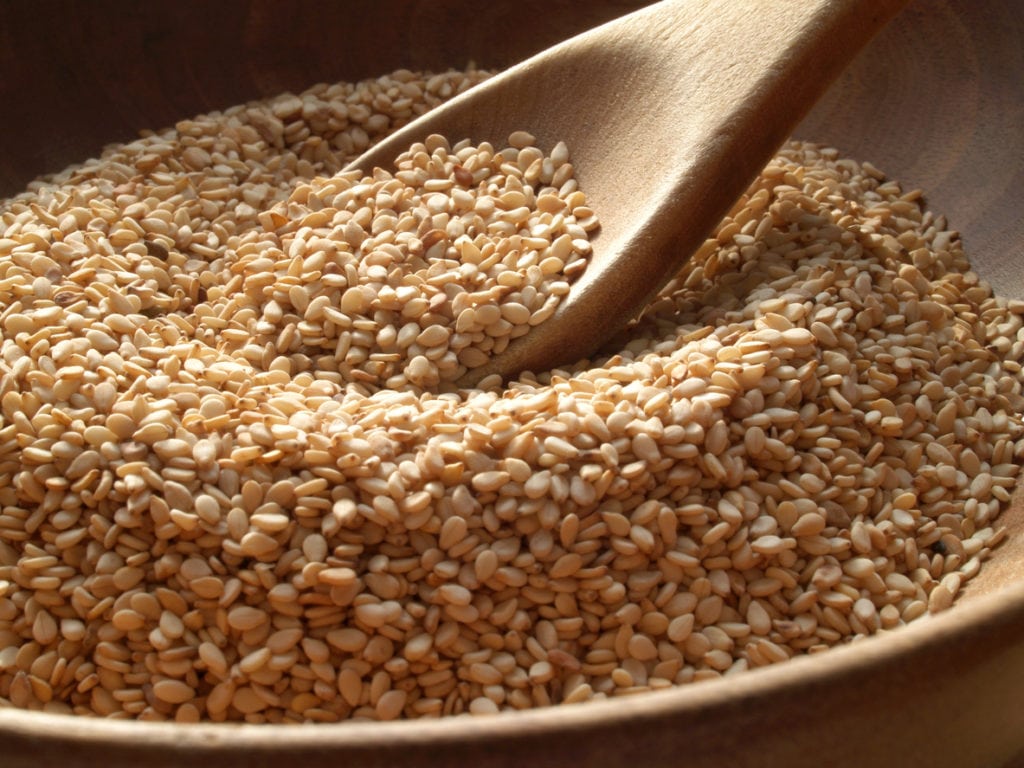
A couple of weeks ago, Roberto Buttini (VP Global Quality and Food Safety of Barilla), asked us:
Could AI help us predict that ethylene oxide concentration in sesame seeds from India would exceed that much the maximum residue limit allowed in Europe?
I had to dig deep into FOODAKAI data from July’20 until today, in order to provide a solid answer.
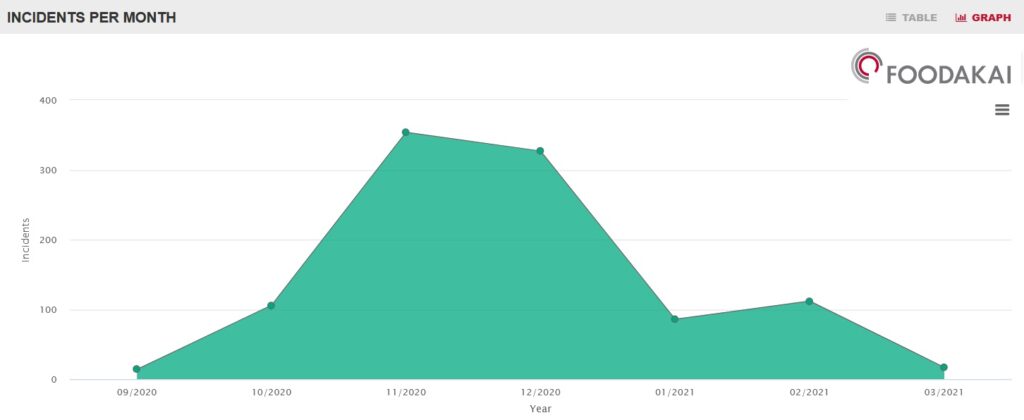
Ethylene oxide recalls during August’20 – March’21 (source: FOODAKAI)
Officially reported recalls and border rejections started to appear early September’20. Within a few days, multiple recalls were officially announced by RASSF and the food safety authorities of Belgium, Luxembourg and France. After 14 different recalls of products due to unauthorized existence of ethylene oxide in sesame seeds, it was obvious that something wrong was going on.
But how could food manufacturers and retailers across Europe know about the rapid escalation of this problem?
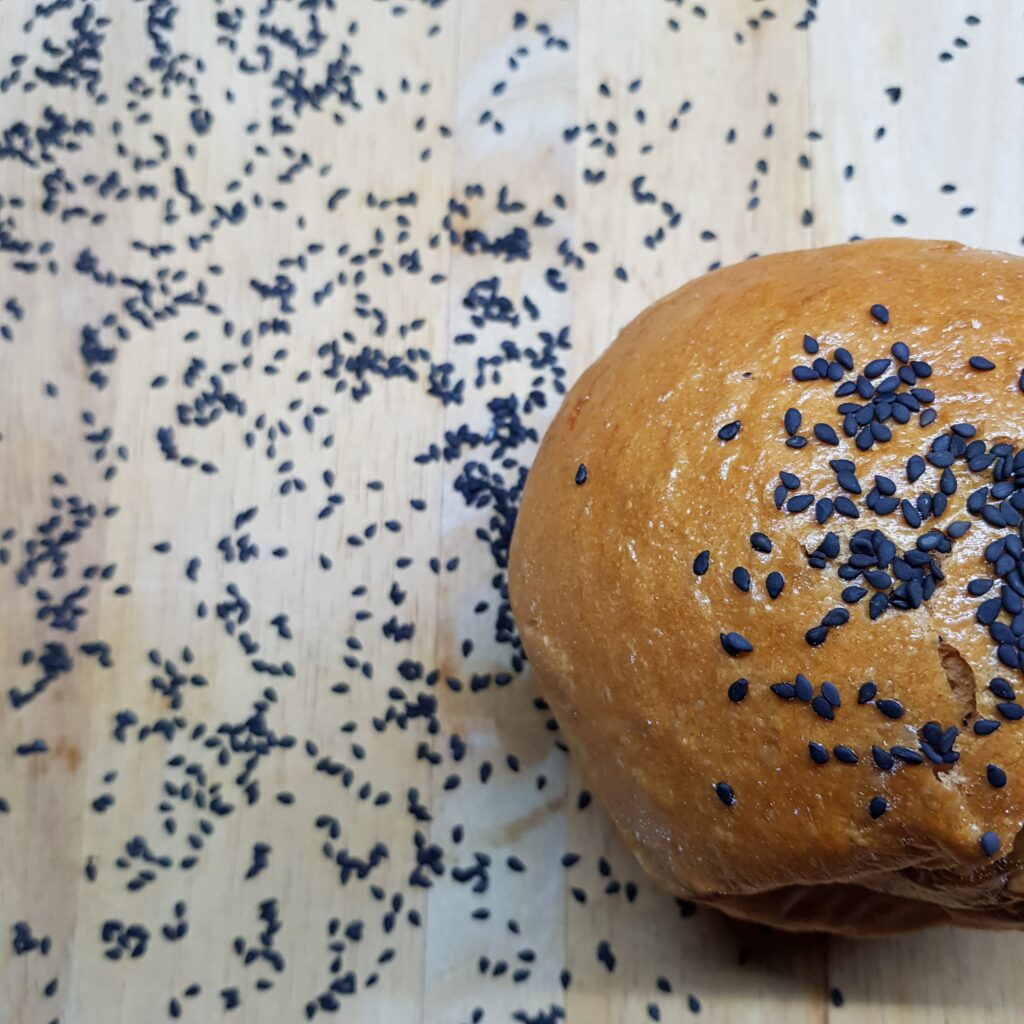
(Photo by Abraham Cisneros on Unsplash)
Well, they could have talked to us.
Our prediction algorithm had immediately identified this rapid increase in sesame seed incidents. This is why ethylene oxide was early highlighted as an upcoming threat in FOODAKAI’s Global Predictions Dashboard.
With more and more incidents being officially announced, the algorithm was updating its prediction: ethylene oxide was one of the two emerging risks expected to double the recalls in sesame seed products within the following 12 months.
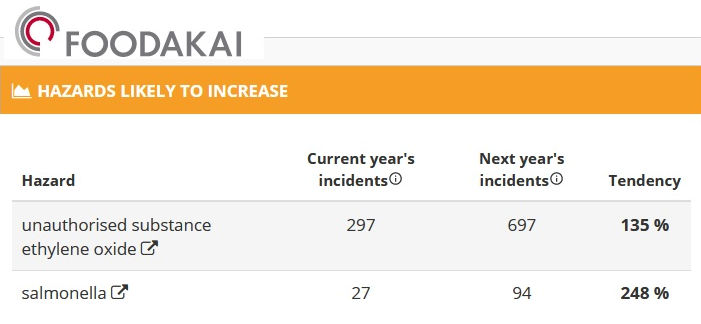
Emerging risks in sesame seeds, according to FOODAKAI‘s prediction model in December’20
What could a Quality &Food Safety team do differently?
By the time that the first recall of this type took place, they should have included (if not already) sesame seeds into the list of critical ingredients for which they monitor emerging risk predictions. This would have helped them understand very quickly that ethylene oxide is a threat to watch closely, and take the following actions:
- Investigate immediately which products and manufacturing lines use sesame seeds, in order to test about suspiciously high concentrations of ethylene oxide. This would help them avoid recalling products after they have already been manufactured or found their way to the market.
- Request extensive lab testing for ethylene oxide and 2-chloro-ethanol of any upcoming purchases of sesame seeds, especially if they are sourced from countries like India that have increased contamination risk.
- Perform a fast online supplier check to see if their existing vendors have been involved in any of these recalls. In such a case, explore the option of switching to an alternative supplier, also checking their safety performance and risk profiles.
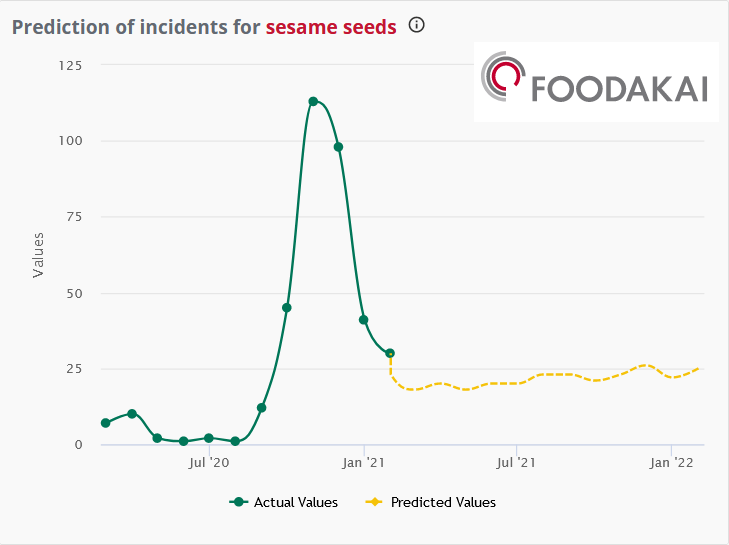
Food safety predictions about sesame seeds in 2021 (source: FOODAKAI)
So, what does the future hold for sesame seeds?
- The prediction model currently suggests that sesame seed incidents will be slightly less in the upcoming months. On a monthly basis, food safety and fraud incidents are not expected to be more than 25.
- The algorithm also suggests that overall incidents associated to ethylene oxide will remain high. One could assume that ethylene oxide has been extensively used in some countries, in order to protect sesame seeds stored until the COVID-19 supply chain disturbances were over.
The bottom line is:
European companies that systematically source sesame seeds for their food products, should maintain a high level of cautiousness and thoroughly test incoming batches even during the next months.
For more food safety predictions about herbs & spices in 2021, you can download the Herbs & Spices – Trends & Predictions Report. Then, talk to us.




